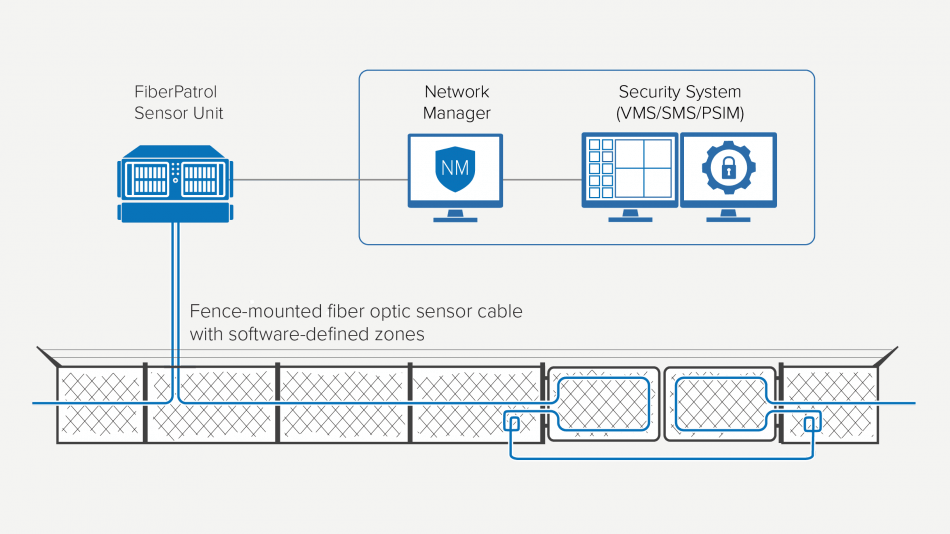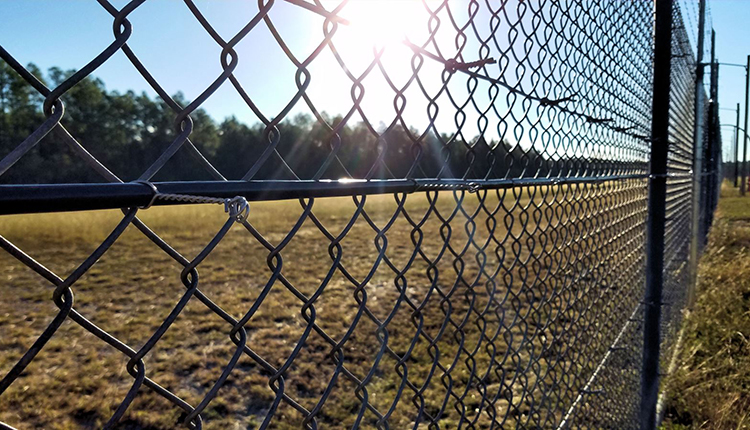How Security Fibers Are Used to Improve the Efficiency of Security Surveillance Networks
How Security Fibers Are Used to Improve the Efficiency of Security Surveillance Networks
Blog Article
Why Fiber Optic Safety Equipments Are the Future of Security
The change to fiber optic safety and security systems marks a substantial innovation in the realm of defense, driven by their extraordinary data transmission capabilities and strength to exterior disturbances. As the landscape of safety and security evolves together with arising technologies such as AI and IoT, the capacity for fiber optics to improve and redefine security frameworks ends up being significantly noticeable.
Benefits of Fiber Optic Equipments
One of the main benefits of fiber optic systems is their superior data transfer capability, which facilitates the transmission of big volumes of information over fars away without significant loss. This particular is specifically advantageous for security applications that need the continual monitoring and transfer of high-definition video feeds, sensing unit data, and various other vital info. Optical fiber can accommodate the growing needs of modern safety and security systems, ensuring that data continues to be undamaged and reliable.
Furthermore, fiber optic cables are less prone to electro-magnetic interference, which can be a considerable issue in environments with numerous electronic tools. This resistance boosts the honesty of the data being transmitted, thus minimizing the threat of information violations or system failures. Furthermore, fiber optic systems are naturally much more protected than typical copper cords, as tapping into a fiber optic line without detection is exceedingly hard.
The sturdiness of fiber optic wires additionally contributes to their allure. They are resistant to environmental elements such as dampness and temperature level variations, lowering upkeep costs and enhancing system longevity. In general, these advantages setting fiber optic systems as a durable and effective option for modern safety and security infrastructures, guaranteeing reputable and secure data transmission.
Improved Information Transmission Rate

The capability to send vast amounts of information rapidly promotes the seamless assimilation of high-definition video clip feeds and progressed analytics. Protection systems can currently process and analyze information in real-time, improving feedback times and situational understanding. In addition, fiber optic connections sustain longer transmission ranges without degradation of signal top quality, making them optimal for large protection networks.
The increased rate of fiber optic systems not only enhances the efficiency of security operations however likewise minimizes latency. This is especially important in essential scenarios where prompt decision-making can prevent protection violations or minimize possible threats. As companies proceed to prioritize security and performance, the need for rapid and dependable information transmission will most certainly strengthen fiber optic systems as a keystone of modern safety facilities.
Resistance to Disturbance
Fiber optic protection systems continually show outstanding resistance to electromagnetic interference, a vital benefit in atmospheres prone to digital sound. Unlike typical copper cable televisions, which can be adversely impacted by electromagnetic areas, radio regularity disturbance, and various other kinds of electrical disturbance, fiber optic cables utilize light to transfer information. This inherent property makes certain that the signals continue to be clear and unchanged, regardless of bordering digital task.
Using glass or plastic fibers in fiber optic technology creates an obstacle versus disturbance, enabling trusted data transmission see this page even in difficult situations such as commercial facilities, urban areas with high digital web traffic, or places near radio towers. This characteristic significantly reduces the probability of signal destruction or loss, making fiber optic systems particularly appropriate for safety and security applications where honesty and precision of data are paramount.
In addition, this resistance to interference boosts the total performance and dependability of safety and security systems, guaranteeing that surveillance and sharp systems work seamlessly. In a globe where security is progressively threatened by sophisticated technologies, the strength of fiber optic systems stands out as a crucial feature, enhancing their standing as a vital element of modern safety and security framework.
Cost-Effectiveness Over Time
Considerable price savings can be attained gradually with the implementation of fiber optic security systems. While the first investment might appear higher compared to conventional copper-based systems, the lasting economic benefits emerge via minimized functional and upkeep prices (fiber security). Fiber optic cords are inherently more durable and much less susceptible to ecological variables, which converts to reduce substitute and repair service expenses over their life-span
In addition, fiber optic systems need much less power to operate, which even more decreases energy costs. Boosted information transmission capacities permit less repeaters and amplifiers, reducing devices investment and streamlining setup procedures. The scalability of these systems likewise contributes to cost-effectiveness, as companies can broaden their safety and security facilities without sustaining significant added costs.
An additional element to consider is the boosted performance in monitoring and response capabilities that optical fiber supply. Enhanced real-time information transmission can bring about quicker event reaction times, potentially mitigating losses and responsibilities connected with protection violations. Altogether, the long-lasting benefits of fiber optic protection systems not just warrant the preliminary expenditure yet likewise place them as a monetarily prudent option for organizations looking for durable protection services.

Future Technologies in Protection
Advancing discover this info here innovations are set to transform protection systems, incorporating expert system (AI) and artificial intelligence to boost risk discovery and reaction abilities. These advancements will permit safety systems to examine vast amounts of data in real-time, determining patterns and anomalies that show prospective dangers. This proactive strategy will certainly make it possible for faster decision-making and more effective occurrence reactions.
Furthermore, the unification of the Net of Points (IoT) is paving the method for interconnected safety gadgets, providing extensive security and tracking. Smart sensing units can communicate info regarding environmental adjustments, while automated notifies can notify check my blog safety personnel promptly of dubious tasks.
In addition, the advancement of biometric modern technologies will further reinforce safety mechanisms. Facial acknowledgment, finger print scanning, and retina identification are coming to be more innovative, supplying layers of authentication that are challenging to bypass.
Verdict
To conclude, fiber optic safety and security systems stand for a significant advancement in protection technology, offering exceptional data transmission speed, resistance to electro-magnetic disturbance, and long-lasting cost-effectiveness. As the need for sophisticated safety and security remedies remains to expand, the combination of optical fiber with emerging modern technologies such as AI, IoT, and biometrics will certainly even more boost safety and security frameworks (fiber security). The mix of these innovations will ensure a more protected and receptive atmosphere, strengthening optical fiber as a keystone of future safety systems
Report this page